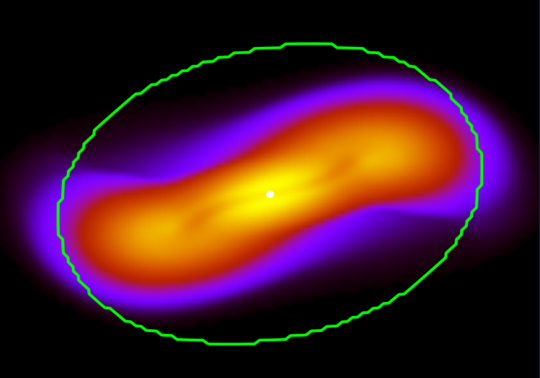
Exposicions Tesis. El dia 12 de gener, dijous, a les 12:00 h, al Saló de Graus Lise Meitner de la Facultat de Física, Burjassot, tindrà lloc la lectura de la Tesi Doctoral realitzada per Fabrizio Di Giovanni, sota la direcció dels doctors José Antonio Font Roda, Pablo Cerdá Durán i Nicolás Sanchis Gual professors d'aquest departament.
Title: Dynamics of boson stars and fermion-boson stars: a numerical-relativity panorama.
Abstract:
The dawn of gravitational-wave astronomy, currently lead by the LIGO-Virgo-KAGRA Collaboration, opens up a new channel to inspect the true nature of dark compact objects. The most compelling members of this category are black holes, which are widely believed to be well described by the Kerr metric near equilibrium. Several more exotic theoretical possibilities have been put forward, which are referred to as black hole mimickers, as their properties and dynamics resemble in certain ways those of black holes. Among those alternative dark compact objects, bosonic stars, either described by a scalar or vector field, are considered to be a robust, viable candidate, as, at least in spherical symmetry, they have been shown to be perturbatively stable and they have a sound dynamical formation mechanism. The results reported in this Thesis extend the study of the dynamical properties of such objects, analyzing for the first time the stability and dynamical formation of spinning bosonic stars and accounting for new families of solutions by considering multifield, multifrequency configurations. These investigations show that the parallelism between scalar boson stars and vector (Proca) stars is broken – scalar spinning mini-boson stars are all unstable due to the appearance of a non-axisymmetric instability while rotating Proca stars present a stable branch as happens in the spherically symmetric case. If ultralight bosonic fields exist, it is natural to speculate if objects which are a mixture of bosonic and fermionic particles might also exist in Nature. These macroscopic composites are known in the literature as fermion-boson stars. Most of my research has been devoted to the investigation of such objects, complementing and extending previous findings. I have constructed equilibrium configurations of fermion-boson stars with different scalar-field potentials, and have investigated their linear stability through the analysis of their critical points. I performed numerical-relativity evolutions to confirm the results from the linear analysis and to characterize the dynamical formation of such objects through the accretion of a scalar field from a bosonic cloud onto an already-formed neutronstar. Moreover, I have considered models with realistic equations of state for the baryonic matter and different bosonic contribution, and constructed curves in the mass-radius diagram to compare them with multi-messenger observational data from gravitational-wave events and the NICER and XMM-Newton experiments. Finally, as a member of the Virgo Collaboration I have examined the gravitational waveforms produced in different scenarios involving exotic compact objects: (i) from the deformations of unstable spinning bosonic stars; (ii) from head-on collisions and mergers of Proca stars; and (iii) from bar-like deformations in neutron stars, focussing on how the presence of bosonic fields can impact their dynamics and the GW emission.






